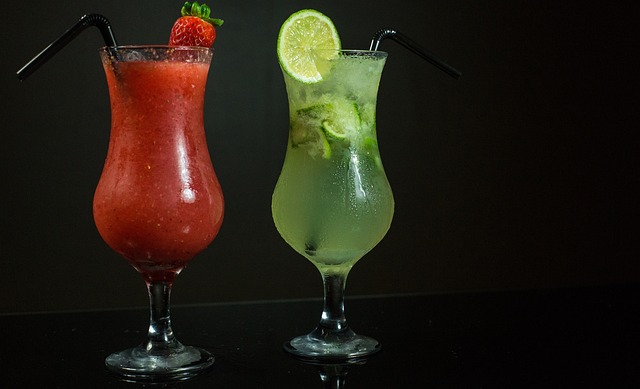Cold water immersion therapy, involving short-term submerging in water below 59°F (15°C), has gained popularity among athletes and wellness enthusiasts. This practice triggers physiological responses like blood vessel constriction and endorphin release, enhancing recovery, reducing muscle soreness, speeding injury repair, and improving athletic performance. As a natural alternative to cryotherapy, cold water immersion supports immune function and provides relief for chronic pain conditions, making it an attractive option for athletes seeking faster recovery techniques. Techniques include ice bath therapy, cold plunges, and contrast therapy, all offering significant benefits like reduced inflammation, improved mental alertness, and enhanced overall health.
“Uncover the therapeutic powers of cold water immersion and its profound impact on overall well-being. This article delves into the science behind this rising wellness trend, exploring how submerging yourself in frigid waters can be a game-changer for health and performance.
From understanding the basic concept to uncovering the benefits and various recovery techniques, we’ll guide you through the world of cold water therapy, focusing on its effectiveness for athletes and as a cryotherapy alternative.”
Understanding Cold Water Immersion Therapy: Unveiling the Concept
Cold water immersion therapy, also known as cold plunge therapy or ice bath therapy, involves submerging oneself in cold water, typically below 59°F (15°C), for a short period. This practice has gained popularity not only among athletes but also as a wellness trend, offering a range of potential health benefits. The concept behind cold water immersion is to induce a stress response in the body, which can lead to various physiological changes.
When one exposes their body to extreme cold, it triggers a cascade of reactions. Blood vessels constrict, reducing blood flow to the extremities and core, while the heart rate slows down. This sudden change in temperature sends signals to the brain, stimulating the release of endorphins, often referred as ‘feel-good’ hormones. Moreover, cold water therapy is believed to enhance recovery techniques by reducing muscle soreness, speeding up injury repair, and improving overall athletic performance, making it a game-changer for active individuals and athletes alike.
Benefits of Cold Water Therapy: Science-Backed Insights
Cold water therapy, or cold immersion, has gained traction as a powerful tool for enhancing overall health and well-being. This practice involves exposing the body to cold temperatures, typically through cold water baths, ice baths, or even cold showers. The benefits of this therapeutic approach are backed by an increasing body of scientific research.
One of the key advantages is its impact on recovery after intense physical activity. Cold water immersion can help reduce inflammation and muscle soreness, speeding up recovery time for athletes. It promotes blood flow to muscles, delivering oxygen and nutrients while removing metabolic waste products. Moreover, cold exposure therapy has been linked to improved mental clarity and mood regulation due to the release of stress hormones and increased norepinephrine levels. As a potential alternative to cryotherapy, cold water immersion offers a natural way to boost the body’s anti-inflammatory response, support immune function, and potentially alleviate chronic pain conditions.
Exploring Different Cold Water Recovery Techniques and Their Applications
Cold water immersion therapy has gained popularity as a powerful tool for recovery and enhancing overall health. This involves submerging oneself in cold water, typically below 59°F (15°C), for a certain period. One of the most well-known applications is ice bath therapy, where individuals sit or immerse their body in an ice-cold tub post-workout or after intense physical activity. This practice has been shown to reduce muscle soreness and inflammation, accelerating recovery for athletes and active individuals.
There are various cold water recovery techniques available, each with unique advantages. Cold plunge therapy involves taking quick dips in very cold water, which can stimulate the release of endorphins and promote circulatory health. Another approach is contrast therapy, where alternating between hot and cold water is used to improve blood flow and reduce muscle stiffness. As alternatives to cryotherapy, these methods offer accessible ways to harness the benefits of cold exposure therapy for better physical and mental well-being.
Cold Water Immersion for Athletes: Enhancing Performance and Accelerating Recovery
Cold water immersion therapy has gained significant popularity among athletes as a powerful tool to enhance performance and accelerate recovery. By subjecting the body to cold water, typically through a cold plunge or ice bath, athletes can trigger numerous physiological responses that benefit their health and athletic prowess. One of the key benefits is reduced muscle soreness and inflammation, which are common after intense workouts or competitions. The sudden exposure to cold water causes blood vessels to constrict, decreasing blood flow to the affected muscles. This process helps minimize damage and swelling, allowing for quicker recovery times.
Additionally, cold water immersion can improve athletic performance by increasing mental alertness and reducing fatigue. The cold shock response, which occurs during the initial contact with cold water, stimulates the release of endorphins, often referred to as “feel-good” hormones. This natural boost in mood and energy can carry over into athletic activities, enhancing focus and endurance. Moreover, regular cold exposure therapy can improve overall circulation and immune function, providing athletes with a competitive edge while also ensuring faster and more effective recovery from demanding training sessions or events.
Cold water immersion therapy has emerged as a powerful tool for enhancing overall well-being and athletic performance. By harnessing the science behind cold water exposure, individuals can unlock a range of benefits, from accelerated recovery after intense workouts to reduced inflammation and improved mental resilience. Incorporating various cold water recovery techniques, such as ice bath therapy or cold plunges, into routines allows athletes and fitness enthusiasts to achieve peak physical condition while promoting long-term health. As an alternative to cryotherapy, cold exposure therapy offers a natural and accessible way to revolutionize one’s approach to wellness.
